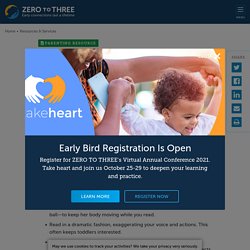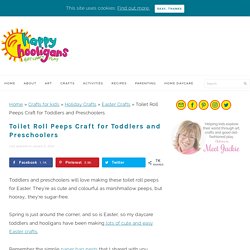

Nic
Coronavirus COVID-19 (2019-nCoV) Lancet Inf Dis Article: Here. Mobile Version: Here. Data sources: Full list. Downloadable database: GitHub, Feature Layer. Lead by JHU CSSE. Technical Support: Esri Living Atlas team and JHU APL. Challenge Cards. Instrucciones para fabricar una mascarilla en casa. Hummus - making hummus with dry chick peas recipe. I love hummus.

Actually, the whole family loves the stuff and it thrills me that the kids enjoy it so much. They love getting hummus in their lunch for school along with some pita bread, or bread sticks. I was very happy to learn how to make hummus with dry chick peas. Hummus is quite healthy since chick peas are low in calories and are a good source of protein and fibre. Olive oil is also one of the best oils you can use containing essential fatty acids and antioxidants. I make hummus at least once a month for years. Finally, I have tried hummus with the dry peas and everyone who told me it is the best way to make hummus is correct.
The cumin and olive oil can be stirred into the hummus, but I prefer the flavour if it is drizzled on top. If you are wanting to try so new kinds of hummus, check out these few varieties of hummus: Spicy Chipotle Hummus – this spicy version is probably my favourite! Care for Your Coronavirus Anxiety. Serve and Return. Surprisingly Simple Techniques for Challenging Behaviour. I often get asked about children’s behaviour. It is a massive topic, with many facets. However, I would always start from the perspective that all behaviour, good or unacceptable, is a form of communication. It is how we, as practitioners and adults, respond to that communication that makes all the difference. The Webster Stratton method is a well known and widely used behaviour management strategy.
It is based on a hierarchy pyramid, with Play at the foundation, moving up through Praise, Limit setting, Ignoring and using Time out as a final resort. Does my toddler have a short attention span because she won’t sit still for a story? A: It is perfectly normal for toddlers to not sit still very long—period.

Most don’t like to stay in one place for long now that they can explore in so many new ways—by running, jumping, and climbing. So, an adult’s idea of snuggling on the couch to hear a story may not be the same idea a toddler has for story-time. You may only be able to read or talk about a few pages in a book at a time. Here are some ways to engage active children in reading: Read a book at snack times when your child may be more likely to sit for longer.Offer your child a small toy to hold in her hand—such as a squishy ball—to keep her body moving while you read.Read in a dramatic fashion, exaggerating your voice and actions.
Toilet Roll Peeps - Easter Craft for Kids. Toddlers and preschoolers will love making these toilet roll peeps for Easter.

They’re as cute and colourful as marshmallow peeps, but hooray… they’re sugar-free. Spring is just around the corner, and so is Easter, so my daycare toddlers and hooligans have been making lots of cute and easy Easter crafts. Remember the simple paper bag nests that I shared with you yesterday? Well today we’re making toilet roll “Peeps” to put in those nests! And speaking of nests, I have a whole bunch of easter chick crafts right here if you’re interested.
Save Last year’s toilet roll chicks were the inspiration for today’s craft. You can find all of our toilet roll crafts here. Poems for kids. Nursery Rhymes and Songs - BBC Teach. Music and Movement Activities for Toddlers and Preschoolers. 50+ Quick & Easy Kids Crafts that ANYONE Can Make! Songs for kids. Short stories for kids. How to teach children English using illustrated storybooks. What makes illustrated storybooks such a good resource for teaching young learners of English? The British Council’s Gail Ellis, co-author of a storytelling handbook for primary English language teachers, explains.
Listen to an interview with Gail in our podcast and register for her webinar taking place on Thursday, 2 October. Illustrated storybooks provide an ideal resource for helping children learn English. The Art of Control. Executive function — our ability to remember and use what we know, defeat our unproductive impulses, and switch gears and adjust to new demands — is increasingly understood as a key element not just of learning but of lifelong success. Researchers at the Center on the Developing Child at Harvard University describe executive function as an air traffic control system for the mind — helping us manage streams of information, revise plans, stay organized, filter out distractions, cope with stress, and make healthy decisions. Children learn these skills first from their parents, through reliable routines, meaningful and responsive interactions, and play that focuses attention and stirs the beginnings of self-control.
But when home is not stable, or in situations of neglect or abuse, executive function skills may be impaired, or may not develop at all, limiting a child’s success in elementary school and later life. Imaginary Play. Practical tips. By Opal Dunn, educational consultant and author Introduction Young children learn English differently from most adults.

Most have an innate ability to pick up English while taking part in activities, by making sense of what they are doing and picking up the adult’s language that accompanies the activity. You can find out more in the British Council booklet ‘How young children learn English as another language’, also available on the parents pages of the LearnEnglish Kids website. Planned English sessions. Ten ways to support your child’s English-learning at home. As the British Council opens a new Learning Time with Shaun & Timmy centre in Mexico for two- to six-year-olds, senior teacher Sarah Reid offers some useful tips for supporting your child’s learning at home. More and more parents want their children to learn English from a young age. I often meet parents of children as young as two or three who say that proficiency in speaking English will help their child 'get ahead in a globalised world'.
In other words, the sooner their children get started, the better. The single most important factor in a child’s success with English is their parents' interest and encouragement, no matter what their child’s age. Carol Dweck: The power of believing that you can improve. How can parents and teachers best educate young children? What principles can both teachers and parents bring to the education of very young children? Gillian Craig, who was part of the Learning Time with Shaun and Timmy writing team, explains. As teachers and parents, we follow certain principles in our roles.
Often though, these principles overlap and all we need to do is recognise and reinforce these areas. Ask (the right) questions When my daughter came out of her class one day shortly after her course started, I asked her, 'What did you do in class today? '. Taking Playtime Seriously. So part of encouraging play is pulling back on how much programmed goal-directed learning we expect from very young children, to leave them time for the fun of exploration, curiosity and, well, fun. But another important part may be creating environments that foster children’s play and parents’ participation and attention. Dr. Hirsh-Pasek, who is a senior fellow at the Brookings Institution, cited its Learning Landscapes Initiative, which aims to set up learning opportunities in public places where people will encounter them.
One of these, the Urban Thinkscape project in Philadelphia, involves puzzle benches at bus stops, with puzzles designed to build STEM skills. Before the benches were installed, she said, parents waiting for buses were almost uniformly looking at their cellphones. Importance of play for babies & children. Australian Government Department of Education and Training (2009). Belonging, being and becoming: The early years learning framework for Australia. Canberra: Commonwealth of Australia. Retrieved 19 June 2019 from Cole-Hamilton, I. (2011). Getting it right for play: The power of play: An evidence base.
Fleer, M. (2013). Ginsburg, K.A. (2007). How young children learn English through play. As we release Learning Time with Timmy – our first app for early-years learners of English – Danitza Villarroel, a teacher on our Learning Time with Shaun and Timmy course in Chile, explains the importance of learning through play, and offers a few tips for teachers new to this age group. Teaching English to pre-school children can be daunting for teachers new to this age group.
Young children have shorter attention spans than older children and adults, and they're still learning their mother tongue. But teaching these learners can be enormously rewarding once you've taken a few basic principles on board. The importance of active learning Active learning means fully involving children in the learning process. ZERO TO THREE. Teachers TV- How Do They Do It In Sweden? How do you speak 'Motherese'? News BBC News Navigation Sections Previous Next Media player Media playback is unsupported on your device. Deb Roy: The birth of a word.